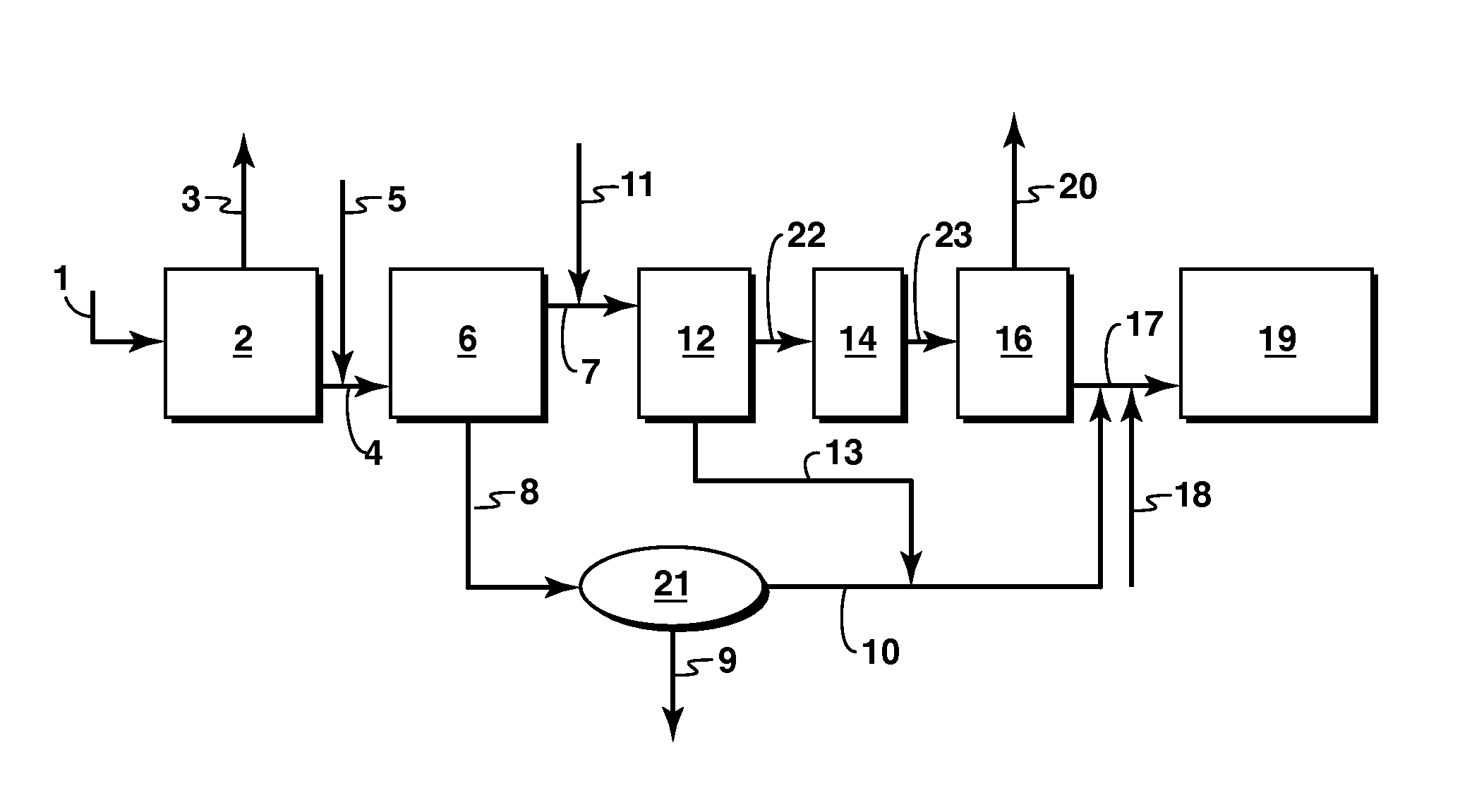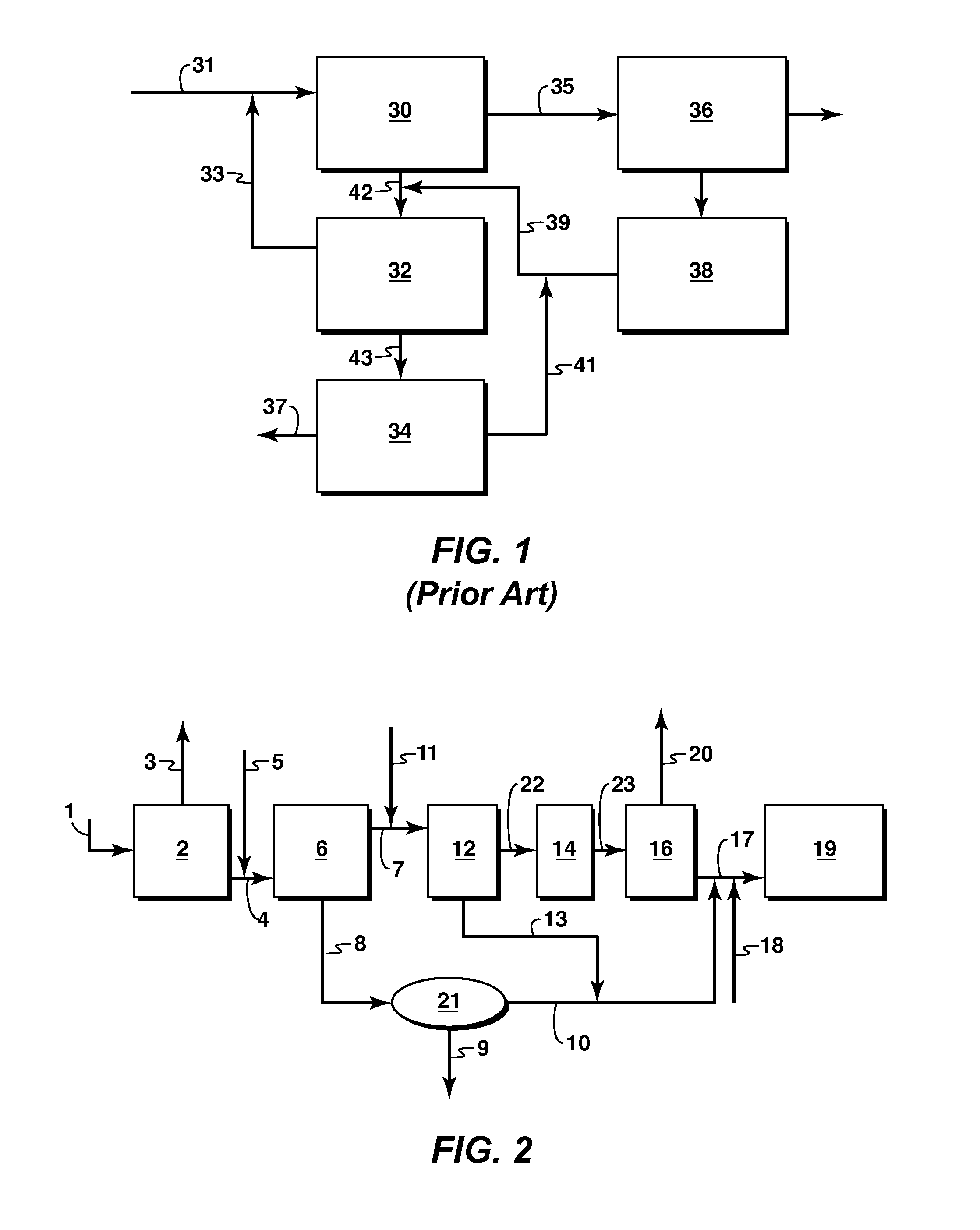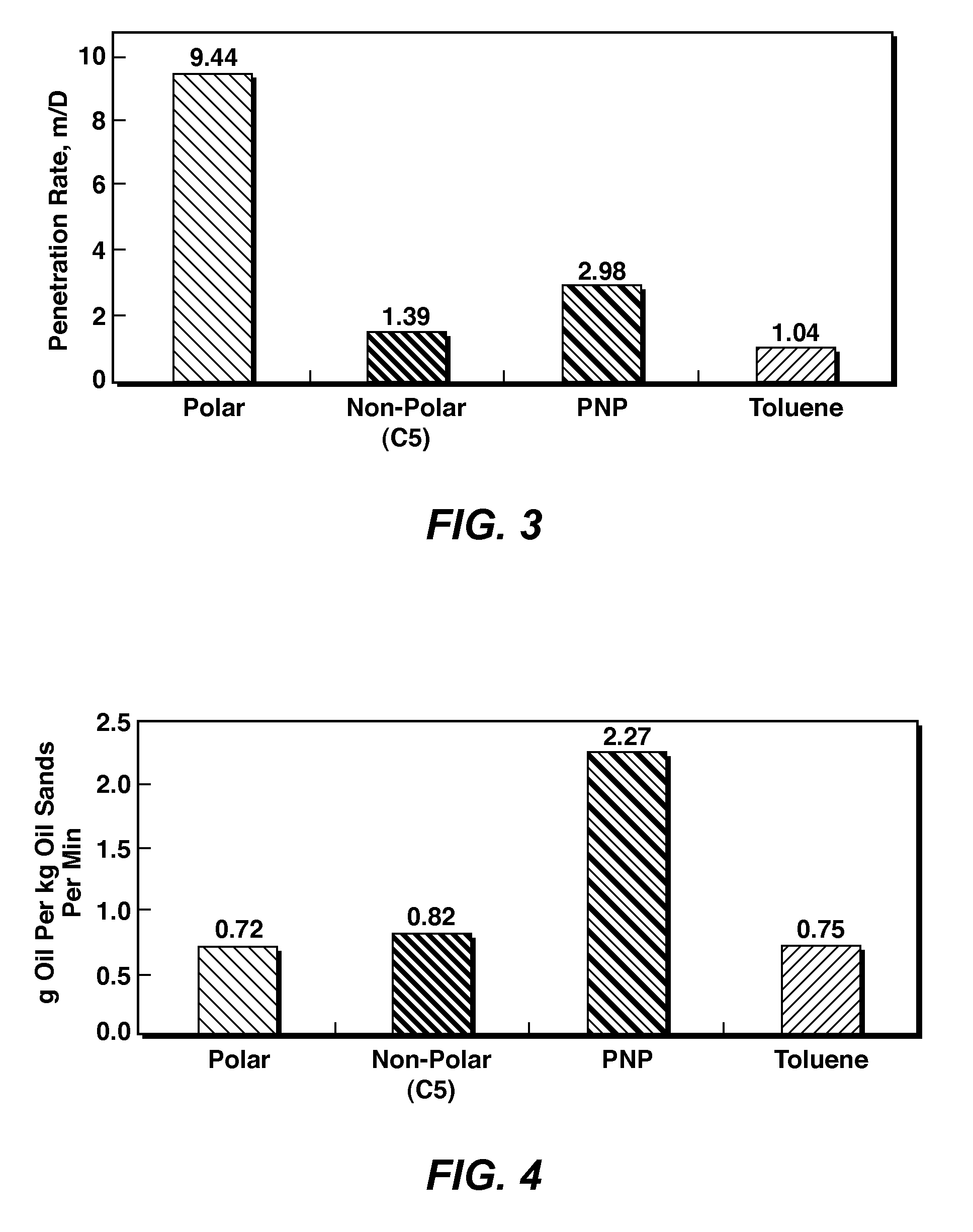Method and system for reclaiming waste hydrocarbon from tailings using solvent sequencing
a technology of hydrocarbon recovery and solvent sequencing, applied in solvent extraction, working up pitch/asphalt/bitumen selective extraction, separation processes, etc., can solve the problems of increasing transportation and processing costs, large volume of waste, and complex disposal arrangements
- Summary
- Abstract
- Description
- Claims
- Application Information
AI Technical Summary
Benefits of technology
Problems solved by technology
Method used
Image
Examples
example 1
[0050]To demonstrate the bitumen dissolving power of the PNP solvent, the bottom 2 cm of four stainless steel blades were coated with unmeasured amount of Cold Lake bitumen. The bitumen dissolving power of four solvents were compared: PNP in 30:70 acetone to heptane solvent ratio, by volume, toluene (aromatic solvent), acetone (polar solvent) and heptane (nonpolar solvent). The blades for the PNP solvent and toluene demonstrations were each 22 mm wide, while the blade for the acetone test was 17 mm wide and that for the heptane was 20 mm wide. The difference in the blade widths did not appear to affect the conclusion of the experiment.
[0051]Each bitumen-coated blade was immersed in 100 mL of each solvent taken in a 120 mL bottle at room temperature (−22° C.) and the cleaning of the blades, in the absence of any stirring, by dissolution of bitumen was videotaped.
[0052]A stream of diluted bitumen running from the bottom of the blade to the bottom of the bottle was formed within four s...
example 2
[0055]Mined Athabasca oil sands were homogenized by kneading at the Imperial Oil Resources (IOR) facility. Into a 50-mL graduated glass (Pyrex™) cylinder, 21.2 g of the homogenized oil sands were packed to a depth of 4 cm using a round-bottomed solid metallic rod (8 mm diameter). A fine-mesh screen was attached to the open bottom of the graduated cylinder to allow drainage of the solvent-diluted bitumen while retaining the sands.
[0056]To the top of the packed oil sands was poured 22-mL each of the four solvents: n-pentane, acetone, toluene and PNP solvent (n-pentane to acetone ratio 70:30 by volume). In four separate experiments, the rate of penetration of each solvent into oil sands matrix was measured by recording the penetrated solvent depth visible from the transparent glass wall of the graduated cylinder vs. time until the first drop of oil was produced. The experiment was conducted at room temperature (21° C.) and atmospheric pressure with the cylinder top capped with an alumi...
example 3
[0059]To compare the bitumen extraction efficiencies of the four solvents, the tests in Example 2 were continued by collecting all the solvent-diluted bitumen draining out from the oil sands pack in a pre-weighed aluminum dish placed inside a fume hood. The solvent from the bitumen was evaporated in an oven at 80° C. to a constant weight and the total amount of solvent-free bitumen was reported as g bitumen extracted per kg of oil sands.
[0060]For the nonpolar solvent (n-pentane), the solvent-diluted produced bitumen initially was very thick and dark-coloured (i.e. bitumen-rich) and with time it became progressively solvent-rich. The time to complete the solvent-diluted bitumen drainage in with pentane was 70.8 min. The total solvent-free bitumen recovered by n-pentane from the Athabasca oil sands was 58.20 g per kg of oil sands.
[0061]For the polar solvent (acetone), the produced diluted bitumen right from the start was solvent-rich and very light coloured. The time to complete the s...
PUM
| Property | Measurement | Unit |
|---|---|---|
| wt % | aaaaa | aaaaa |
| boiling point | aaaaa | aaaaa |
| temperature | aaaaa | aaaaa |
Abstract
Description
Claims
Application Information
 Login to View More
Login to View More - R&D
- Intellectual Property
- Life Sciences
- Materials
- Tech Scout
- Unparalleled Data Quality
- Higher Quality Content
- 60% Fewer Hallucinations
Browse by: Latest US Patents, China's latest patents, Technical Efficacy Thesaurus, Application Domain, Technology Topic, Popular Technical Reports.
© 2025 PatSnap. All rights reserved.Legal|Privacy policy|Modern Slavery Act Transparency Statement|Sitemap|About US| Contact US: help@patsnap.com



